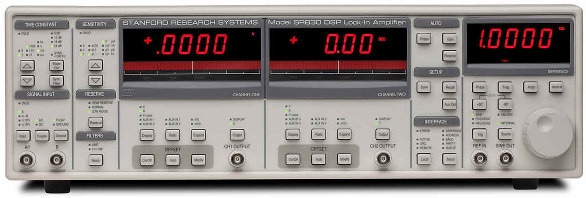Difference between revisions of "Lock-in Amplifier"
| Line 1: | Line 1: | ||
| − | |||
| − | |||
[[File:Example.jpg]] | [[File:Example.jpg]] | ||
Revision as of 11:15, 18 April 2016
What is a Lock-In Amplifier?
A lock-in amplifier is a type of amplifier used to extract quiet signals out of noisy data. High quality lock-in amplifiers can extract signals up to a million times quieter than the surrounding noise. The output of a lock-in amplifier is a DC signal showing the strength of the signal to be extracted.
How Does a Lock-In Amplifier Work?
Conceptually, a lock-in amplifier works by exploiting the orthogonality of sinusoidal functions. Use of a lock-in amplifier requires a clear reference signal at the frequency of the signal to be extracted. This reference signal is multiplied by the noisy input signal and the product is integrated over a set time. When sinusoidal functions are multiplied together and integrated over a significant amount of time, the result will be zero unless the two sinusoidal functions have the same frequency. This is the before-mentioned orthogonality of sinusoidal functions. For the output of a lock-in, this means that the contributions of all signals not at the reference frequency will be attenuated very close to zero. The output is a DC signal showing the strength of the original input signal at the reference frequency.
From a circuits standpoint, a lock-in amplifier consists of a homodyne detector followed by a low-pass filter.
